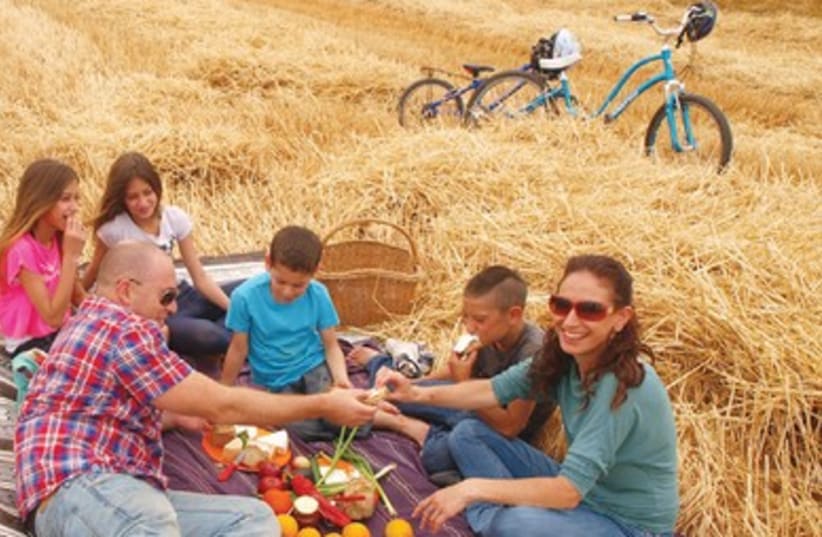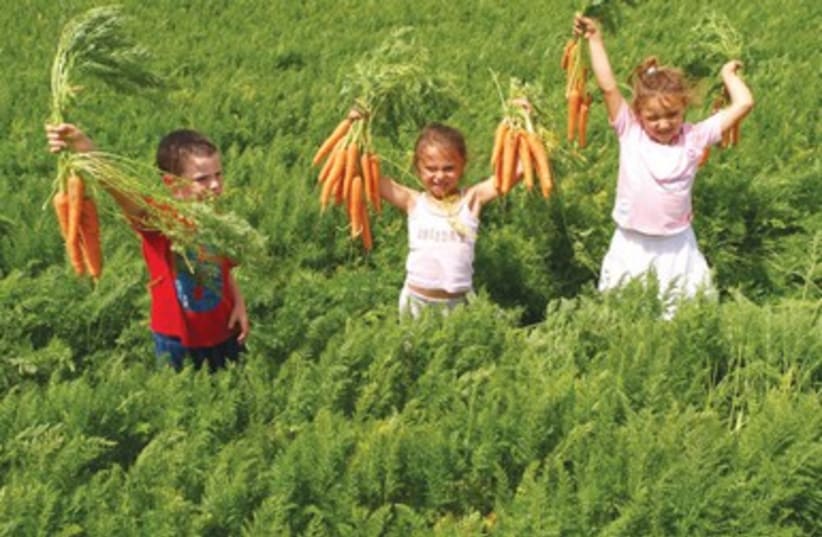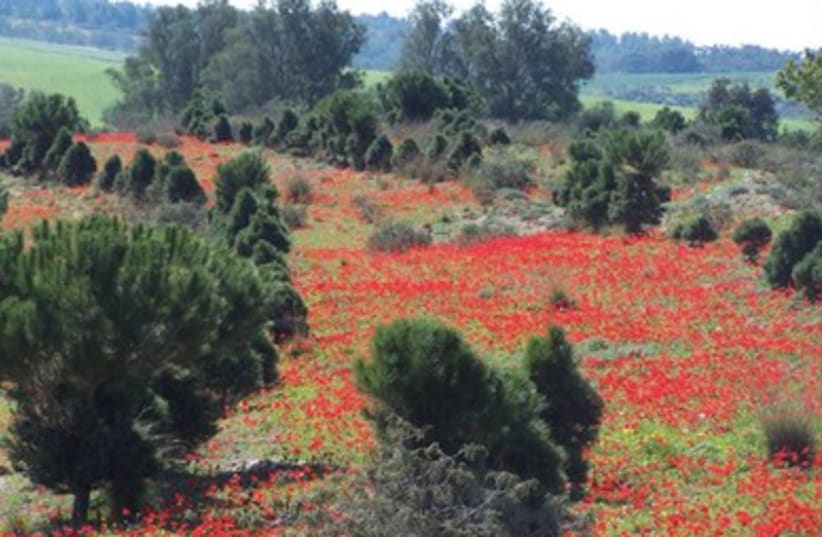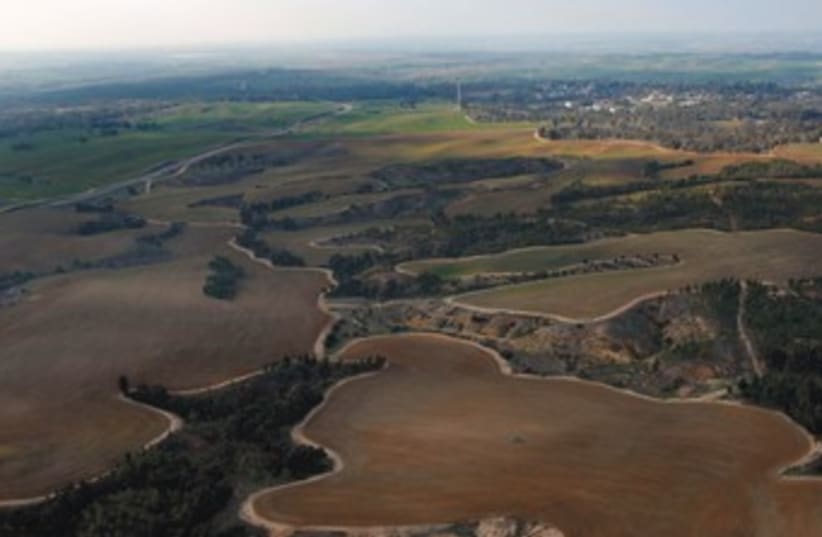



There is far more to the Negev right now and all year long than ray-soaking opportunities.The region offers a wide range of outdoor attractions, picturesque trails, absorbing cultural institutions, fascinating artists’ and craft studios and fun festivals, as well as accommodation, that provide families and individuals with plenty to do and see in consummate comfort, on day trips, weekends or longer stays.You can start your foray into the Negev from the northwest – especially if your point of departure is Tel Aviv and Gush Dan – at Kibbutz Or Haner, with a look at the murals created by renowned Argentinean artists Jose Kura and Daniela Almeida, which depict various facets of life on the kibbutz. (For more information: 050-734-3300.) After enjoying the aesthetics on show at Or Haner, you may want to slip into full chill-out mode.While your pulse is likely to slow appreciably in the wide open spaces and clean desert air, you can take your stress level down a couple of notches more at the Midbary spa at Kibbutz Ruhama, just a few minutes’ drive away. According to the Midbary Desert Health Farm’s website (), the facility offers “a world of holistic well-being” that caters to “your individual needs with pleasure, discretion and empathy.” There, you can take part in a wide range of workshops on, for example, healthy eating, physical exercise, awareness and meditation, and also attend lectures on different kinds of natural dietary regimes and cleansing the body’s system, and gain some insight into alternative healing methods such as homeopathy, ecosphere and bioenergy. Midbary also has a spa facility designed to pamper and relax you.After all that physical and spiritual cleansing, you may not want to drive too far, so accommodation at nearby Kibbutz Dorot may be just the ticket. The kibbutz offers a boutique hotel with eight spacious rooms, as well as nine wellappointed apartments. (For more information: (08) 680- 8875 and www.dorot.org.il.) There are plenty of delightful trails to be followed, as well as eye-opening natural landscapes and interesting historic sites all over the Negev. If you are in the vicinity of Kibbutz Ruhama, you might enjoy traipsing up and down the Ruhama Ravines nature reserve and its unique topography etched into the gravel and loess terrain. In spring, the nature reserve is awash with flowers of every shape and color. There is also a site of historic interest right next door – the Jamama Ruins, with its remains of 19thcentury mud dwellings, built on top of a village from the Byzantine era by members of the Kharat Beduin tribe. There is also a colorful Byzantine mosaic in the vicinity and an ancient burial cave.The Hashikma Trail offers visitors the opportunity to catch some of the region’s most spectacular views by a variety of modes of movement and transport.Traversing the 60-kilometer route can be achieved by car – and you won’t need fourwheel drive – on foot or by mountain bike and takes in plenty of interesting topography and geology, such as shifting sand dunes, impressive ravines, expansive agricultural areas and all manner of wildlife. One end of the trail is near Moshav Amatzia and goes through Nahal Adoraim via Kibbutz Or Haner north towards Sderot and as far as Zikim Beach.If spotting some fine-feathered friends takes your fancy, you can get several eyefuls of all manner of birds from the Asaf Sivoni lookout near Kibbutz Nir Am. The vantage point offers a spectacular view of the Nir Am Reservoir and a buffer zone between the Gaza Strip and various communities on our side of the border.In addition to viewing the wildlife that passes through the region as the seasons change, you’ll be able to pick out the moshavim and kibbutzim spread out across the area, and even the Ashkelon Power Station and the Mediterranean Sea.Just down the road is a site of great historical importance, Armistice House. The building hosted several local milestone events in the 20th century.Negotiations between Israel and Egypt over infringements of bilateral accords were held there; the Israeli passengers of the Bat Galim ship, arrested as the craft passed through the Suez Canal in 1954, were repatriated to Armistice House; and the bodies of IDF soldiers killed in the Sinai Campaign in 1956 were returned to the site by the Egyptians.The Negev has plenty of other intriguing facilities dotted around. You might not think of a desert region as a good place to get a handle on how we utilize our water resources, but a visit to the Negev Water and Defense Museum at Kibbutz Nir Am should leave you much wiser about how the Negev has managed to survive, both in military terms and with regard to the development of local agriculture. (For more information: (08) 680-9923 and 050-570-9042.) If it’s more ancient history you’re looking for, the Archeological Museum at Kibbutz Dorot houses a wide range of finds from across the millennia, from prehistoric basalt and flint tools all the way to remnants of the Ottoman rule in this part of the world, as recent as the early part of the 20th century.The Negev, with its tranquility, open spaces and inviting natural light, has attracted large numbers of artists and craftspeople to the region. At Kibbutz Nir Am, for example, you can get a close look at the work of sculptor Shlomit Sivoni, as well as obtaining some inside technical information at workshops she holds for small groups. (For information: 050-730-3332.) Meanwhile, over at Kibbutz Kfar Aza, Shosh’s Gallery houses an impressive selection of acrylic and oil paintings, pottery creations, paper sculptures and jewelry (050-649-2864).Amnon’s blacksmith workshop on Kibbutz Ruhama offers visitors a chance to see how iron creations, of a practical or aesthetic nature, are crafted. Products are also on sale to the public there. (For more information: (08) 680-7747 and 054-200-9605.) In recent years, the Negev has also become home to a wide range of festivals that take place throughout the year, such as the Red South Festival, which takes place in February and is the best time to catch the spectacular flowers that bloom at that time.The event includes walking trips, sports activities, workshops and all sorts of cultural events. (For more information: www.habsor.co.il) Then there’s the Cinema South Festival, which takes place at the Sderot Cinematheque in June (http://csf.sapir.ac.il/). And, as many of the local kibbutzim were founded by immigrants from countries like Brazil and Argentina, it only seems natural to hold a South America Festival with all the requisite Latin American components – music, dance, soccer and, with due deference to vegetarians, vast quantities of meat.For more information: www.habsor.co.il This article was made possible with the help of the Israeli Ministry of Tourism.www.goisrael.gov.ilFollow @JPost_Lifestyle
